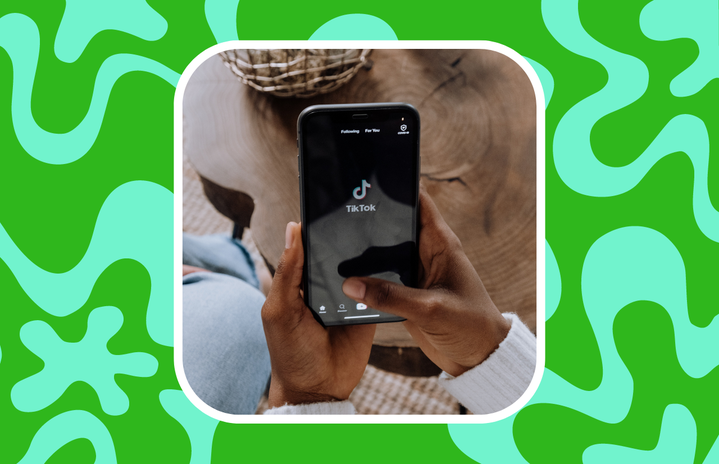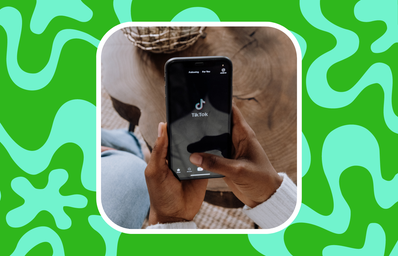Over the past year, a new beauty and self-improvement trend called “looksmaxxing” has been gaining popularity on TikTok. Looksmaxxing refers to the practice of optimising one’s appearance through fitness, fashion, grooming, cosmetic procedures and other means. In fact, you might’ve even practised “looksmaxxing” trends without realising; An example of this would be the, in my opinion, impossible practice of ‘mewing’, which involves the practice of proper tongue posture and placement that proponents claim can improve facial attractiveness over time.
Trends like this can arguably be seen as harmless, skincare fads, gua sha-ing and retinol use seem to just be part of the endless scroll we find on tiktok of new trends in order to naturally enhance our beauty.
However, the practice of “looksmaxxing” in general is arguably something to be concerned about. On TikTok, the #looksmaxxing hashtag has over 90 million views and counting. Thousands of young people, predominantly Gen Z males, are sharing their looksmaxxing journeys and tips on the platform. The targeting of this trend towards young people is just one part of this concern. A quick look at the tags on TikTok reveals hundreds of videos whereby an insecure young teen has sent a photo of themselves to an unknown stranger on the internet to be edited to their optimum.
Some accounts simply recommend, ‘Softmaxxing’, this includes altering one’s hairstyles and colouring, or makeup. Yet, the accounts that are making these suggestions, achieve the ‘result’ via changes to the submitted image utilising apps such as FaceApp, creating unrealistic expectations of what young people could ever expect to look like from applying a certain makeup style or dying their hair. Trust me- no makeup can achieve the subtle changes of anatomy that filters on FaceApp can subtly apply, nor will your new full head of bleach ever look as healthy and glossy as an edit on FaceApp will make it.
Aside from the sadness that this aspect of the trend brings me, by encouraging the younger generation to analyse their beauty potential through beauty trends and standards of our digital age, it is the cosmetic aspect of the trend that worries me more. This is where ‘Hardmaxxing’ comes in, whereby cosmetic surgery procedures are encouraged to meet the desired beauty standards. It is more than just concerning to see young teenagers being recommended masseter Botox in order to slim their faces, it is downright wrong. I genuinely believe that the people behind these accounts, do not consider themselves as part of a wider, and darker aspect of “looksmaxxing”. These accounts quite frivolously rate people’s attractiveness on a scale of 1-10, and do so in order to encourage followers and traction, and probably don’t see themselves as part of a wider culture of unrealistic beauty standards…or worse, Incel culture.
“Looksmaxxing” actually originated, and is most commonly associated with incel (involuntary celibate) online communities. “Looksmaxxing” advice tailored to incels often focuses on conventions of masculine attractiveness like building muscle, increasing height, enhancing jawlines or other facial features. The goal is to make oneself more aligned with socially accepted standards of male beauty and desirability. In this sense, the trend becomes darker, associated with the online subversive community of, often misogynistic, involuntary celibates. The extremes of this include online communities targeting vulnerable young men, and promoting:
-Steroid use
-Hair transplants and plastic surgery
-Using pumps for penis stretching
-Removing ribs for a sculpted waist
-“Bone-smashing”, which involves using hammers to break bones in the face to look more masculine
-“Starvemaxxing”, which encourages extreme dieting and eating disorders
-“Whitemaxxing”, which involves using creams to present as more White
-“Edgemaxxing”, which is described as “withholding climaxing in order to boost testosterone to improve appearance”.
In this way, “Looksmaxxing” is also, in fact possibly even more so, a threat for young men, who are truly only a click away from the incel rabbit hole. In this way, insecure young men, who have perhaps never considered their looks to be the barrier between themselves, and sexual relationships, are at risk of being pulled into the trap of body dysmorphia and women hating. Worse still, the more that these boys are pressured to look at “Looksmaxxing” content, the more that the algorithm, promotes these trends, bringing these boys closer to the wormhole that is incel culture’s perpetuation of gendered hate speech and misogyny.
Studies highlight that young men and boys are beginning to recognise misogynistic ideology and restrictive performances of masculinity, yet arguably culture has not yet done enough to combat the problem. Even still, positive counter-forums, and influencers who aim to debunk the myths of beauty standards and masculinity, must be championed to decrease the pressure on young people to conform to these trends and their associated problems.
We are all in the digital age, participating in trends that are over as quickly as they came, yet I fear that “looksmaxxing” is a subversive trend that is so multifaceted it is not yet being taken seriously, with its victims quietly being targeted. In this spirit, we all need to remember that whilst social media isn’t reality, it certainly has real-life implications which cannot be ignored.

